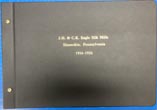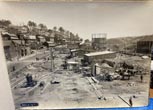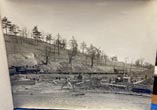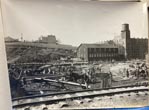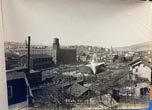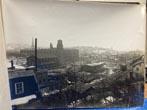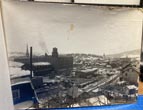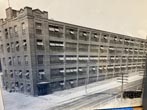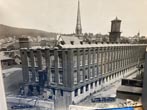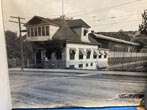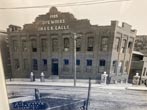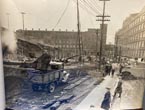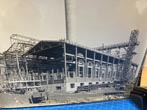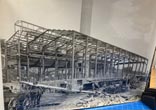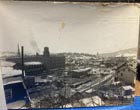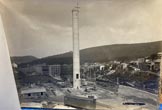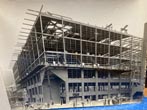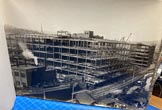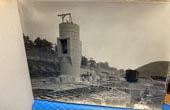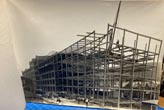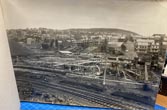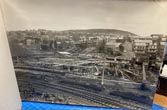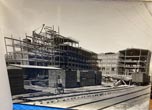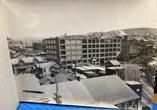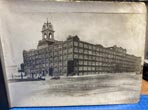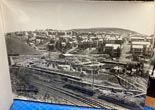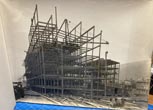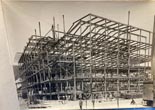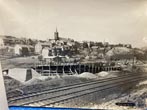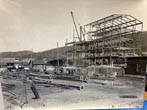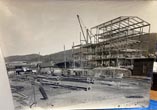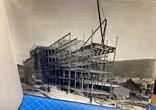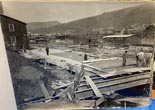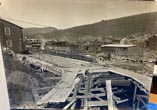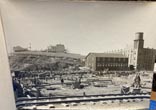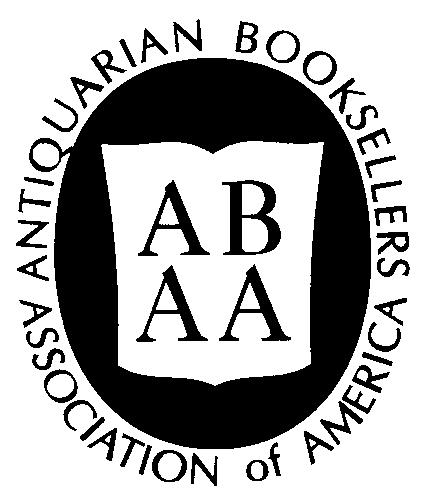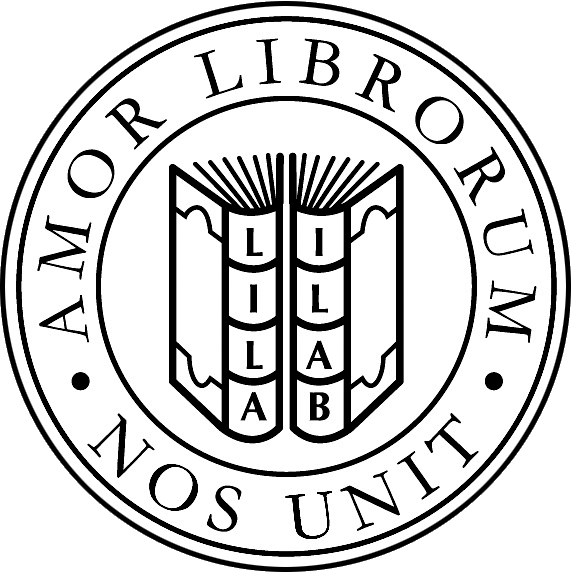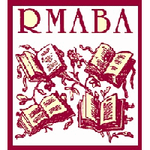Dealer in Rare and First-Edition Books: Western Americana; Mystery, Detective, and Espionage Fiction
Architectural Photograph Album In Time Lapse Sequence Documenting The Construction Of The J. H. & C. K. Eagle Silk Mills In Shamokin, Pennsylvania Through 1916
THOMAS, MYRON [PHOTOGRAPHER], W. U. JURY [ARCHITECT]
Other works by THOMAS, MYRONPublication: Thomas Photographer, 1916 - 1924, Shamokin, Pennsylvania
Thick oblong folio. 16" x 11 1/2" black calf post binder, titles stamped in gilt on the front cover, brass screw- posts, 92 linen-backed silver gelatin photographs, sized 10 1/2" x 13 3/4," all with photographer’s stamp on versos, many with text within negative at lower fore-edge of image, and nearly all dated, all images with linen hinge at gutter margin. This extraordinary photograph album provides an indispensable week-by-week visual historical record of the building of the famed J.H. & C.K. Eagle Mill silk mills located on the site of the old John Mullen Foundry in Shamokin, Pennsylvania. Taking advantage of cheap coal, fuel oil, and the convenience of transportation via the Philadelphia & Reading Railroad routed through the town, the two brothers decided they would finance and build the largest textile factory in America in Shamokin. They commissioned Wilson Jury, former fellow boarder of Charles Eagle, as the architect, and hired the Shamokin Lumber Company as the primary contractor. The company purchased raw silk in Japan & China, and then shipped back to the U.S. in large quantities, where the silk fibers were dyed, soaked, and spun, and then the silk threads were churned out in large quantities from the Shamokin "Mill." By the mid-1920s the plant employed over 3300 employees with a monthly payroll over $5 million. Following the first photograph of the architectural rendering for The Mill, the album continues with images from March, 1916 showing the site cleared, views of nearby factories, snow on the ground, and the construction crews were setting the forms for the foundations and piers. The images show work crews preparing and pouring footings for the massive brick building in April, 1916; the erection of the structural steel began at the end of April, 1916, and by May 12, workers were installing decking. In June, the album shows windows installed, bricklayers & mason working their way around the factory on scaffolds, following the rapid expansion of flooring and structural steel. The structure at 500,000 square feet would become the largest textile building under one roof in America. In addition, architectural elements such as the massive cement eagles overshadowing the doors are installed, and the crews began construction of the massive Beaux-Arts inspired power plant. The photographs show the towering smoke stack for the power plant under construction, windows and brick façade being installed, and finally at the end of November, 1916, the factory and power plant completed. A short series of photographs, also by Thomas, show the step-by-step construction of the Eagle Silk Industrial Mill Dye House Addition on Walter Street directly across from "The Mill," followed by images of the Mills in Edgewood, Rock Street, the Throwing Plant, Kulpmont Mill, and the Treverton Mill. John Eagle was a New York financier, banker and big game hunter who took over the silk mills in Shamokin, Pennsylvania, 1896 to rescue them from financial ruin. Partnering with his younger brother Charles Eagle, they formed the J.H. & C.K. Eagle Textile Company which would operate successfully until filing for bankruptcy in July of 1937. The company was reorganized first as the Print & Dye Works which failed in 1942 during World War II, and later became the Shamokin Realty Corp. leasing the monstrous Mill for decades. Myron Thomas operated his photography studio from 1876 through his retirement in 1929, and along with his Shamokin Studio, operated commercial photography studios in Mount Carmel, Ashland, and Tamaqua, Pennsylvania, specializing in publicity, advertising, and even later aerial photography. The photographer is perhaps best remembered for having taken Thomas Edison's favorite studio portrait, considered by Edison as the best ever taken of him. See: Mark Gilger, Thomas Studio, Shamokin, Pennsylvania (1878-1998), Studio History and Thomas Family, Shamokin News (2004); Richard Knupp, Bellefonte Secrets, North Central Pennsylvania, Vol. 3, Issue IV (July 11, 2010). Well protected and presented with fine, bright images with strong contrast. A choice item!
Inventory Number: 49333Sold -- Contact us
![Architectural Photograph Album In Time Lapse Sequence Documenting The Construction Of The J. H. & C. K. Eagle Silk Mills In Shamokin, Pennsylvania Through 1916 THOMAS, MYRON [PHOTOGRAPHER], W. U. JURY [ARCHITECT]](/media/images/large/49333.jpg)
